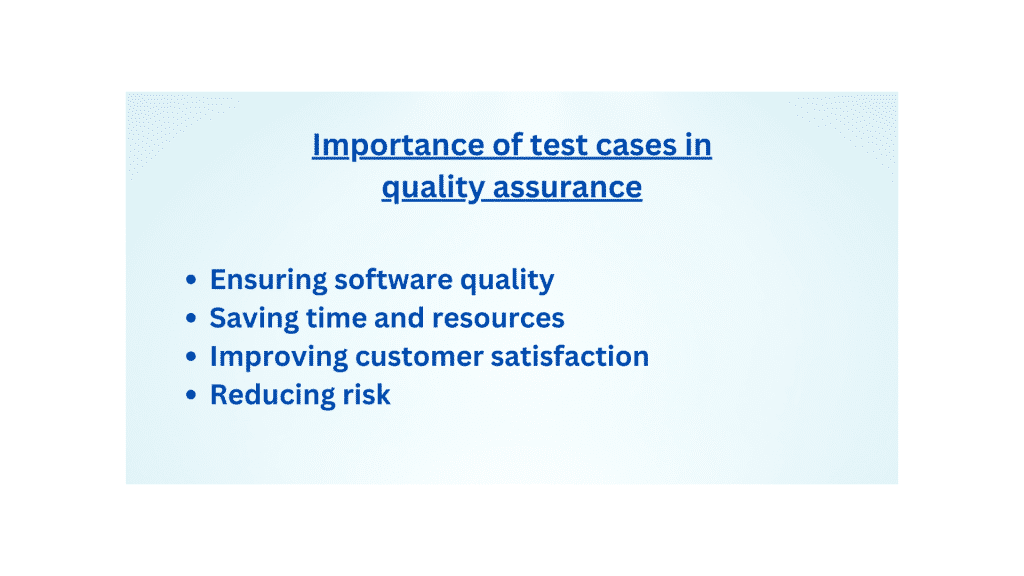Quality assurance is an important aspect to look into when developing software. It ensures that software is free from defects, meets user requirements, and works as intended. Test cases are a critical component of quality assurance. They are used to verify that software functions correctly and meets requirements. In this article, we will explore the use of test cases in quality assurance, their importance, and how to make them effective for extensive test case management.
What are test cases?
Test cases are a set of steps or conditions that are executed to verify software functionality. They are made to make sure that software complies with the requirements and operates as intended. They can be manual or automated, and they are executed by quality assurance testers to identify defects and ensure that the software is of high quality.
Importance of test cases

The importance of test cases in quality assurance cannot be overstated. They are used to identify defects early in the software development life cycle. Early defect identification helps to reduce the cost and time required to fix defects. It also helps to ensure that defects are identified before software is released to end-users, which can help to maintain the reputation of the software and the development team.
They are also essential for ensuring that software meets user requirements. User requirements are the set of features and functionalities that users expect from the software. They are designed to make sure that these conditions are fulfilled, and that the software functions as intended. This helps to ensure that users are satisfied with the software and are more likely to use it.
For software to be of good quality, effective test cases must be created. They should test a particular functionality or feature and be clear and simple. They should also be designed to cover all possible scenarios, including boundary conditions and edge cases. They should be designed to ensure that defects are identified and fixed before software is released to end-users.
When creating them, it is essential to consider the intended audience. They should be written in a manner that is can easily be interpreted and followed. They should also be designed to be repeatable so that they can be executed multiple times to ensure consistency in test results.
Test cases should also be designed to ensure that they are scalable. Scalable means that they can be used to test different versions of the software and ensure that all functionalities are working as intended. This provides high-quality software while reducing the time and expense associated with software testing.
Types of test cases
These include functional, integration, regression, and acceptance test cases.
Certain software functionalities or features are tested using functional test cases. They are designed to ensure that the software works as intended and meets user requirements. They should be designed to cover all possible scenarios and should be repeatable to ensure consistency in test results.
Integration cases are used to test the software’s integration of various modules or components. They are designed to ensure that the software works as a whole and that all modules or components work together seamlessly.
Regression cases are used to make sure that software updates and modifications don’t introduce new flaws or issues. They should be designed to cover all functionalities and features of the software to ensure that changes do not affect the overall quality of the software.
Acceptance cases are used to ensure that software meets user requirements and is ready for release. They should be designed to cover all possible scenarios and should be executed by end-users or stakeholders to ensure that software is of high quality.
Overall, test cases are a critical component of quality assurance in software development. They are used to identify defects, ensure that software meets user requirements, and maintain the reputation of the software and the development team. Creating effective test scenarios is essential to ensuring that software is of high quality. They should be clear, concise, repeatable, scalable, and designed to cover all possible scenarios.
Prioritizing test cases based on their significance and impact on the software is as important as developing them. It’s possible that some test cases are more important than others and should be given more priority. Setting priorities aids in ensuring early fault detection and high-quality software. To keep test cases current and useful, they should also be evaluated and updated frequently. They should be updated to reflect changes in software as it develops. The regular examination and update contributes to the high quality and user requirements of the program.
Conclusion
In conclusion, test cases are a crucial part of software development’s quality assurance process. They are used to identify defects, ensure that software meets user requirements, and maintain the reputation of the software and the development team. Creating effective test cases, prioritizing them, and regularly reviewing and updating them are critical to ensuring that software is of high quality. Software developers can ensure that their products meet the needs and expectations of their users and deliver high-quality software that satisfies their customers.


























